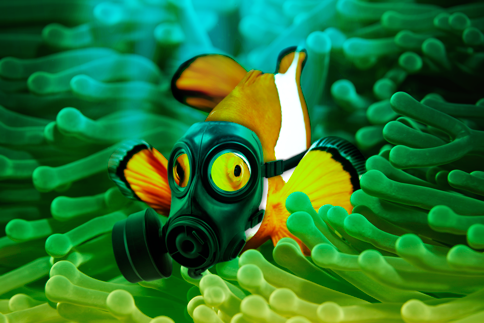Industrial chemicals
not the most exciting topic in the world... or is it?
October 24, 2013
Well… you’d be surprised. Many exciting developments based on sustainable processes are on the industry horizon, waiting to be commercialized. Other processes are right here, right now, generating business opportunity, revenue and cost savings for forward-looking companies. We can’t wait to tell you about them.
Part I: Green Chemistry, the IdeaOur latest topic, a six-part series on green chemistry, provides a useful framework for the process design, implementation and product information we hope to share with you. It highlights our general approach to glycol-related products and process design and how we do things differently than our industry peers.
Part I starts by describing what green chemistry is; how it differs from earlier types of fighting pollution; and the benefits it offers businesses as well as consumers and the environment. |
What is Green Chemistry?
The EPA defines green chemistry as: "the design of chemical products & processes that reduce or eliminate the use or generation of hazardous substances."
OK, but let’s bring that definition down to earth. Green chemistry is a branch of chemical science and engineering. It aims to eliminate the use, production and release of hazardous substances through better design of chemical products, processes and technologies.
Worried about greenwashing? We understand. The tsunami of claims about green this, green that is enough to make anyone a skeptic. The good news is, green chemistry is relatively easy to spot.
It’s Green Chemistry if it… |
|
| Prevents pollution at the molecular level. | |
| Reduces the intrinsic hazards of polluting chemicals. | |
| Applies innovative scientific and engineering solutions to real-world business, environmental and health problems. | |
| Reduces the source and negative impacts of pollutants on human health and the environment. | |
| Helps design and produce cost-competitive chemical products and processes. |
The objective of green chemistry: develop products that attain |
This seems familiar. Haven't we been here before?
Not really. Remediation—our original approach to environmental safety—tries to fix environmental damage by removing hazardous materials from the environment after or while chemicals are released. Green chemistry-based products and processes:
| Keep hazardous materials out of the environment in the first place. | |
| Can be applied across the life cycle of a chemical product or process, from design to production & environmental monitoring. |
But green chemistry has been around for more than 20 years. Preventing pollution in the first place became America's official policy with passage of the Federal Pollution Prevention Act of 1990. Section 2 of the act establishes a pollution prevention hierarchy (check out the text box above).
Next Time: Green chemistry's Triple Bottom Line. We will explore why simply fixing pollution after it occurs has enormous opportunity costs, and the health, environmental and business benefits of green chemistry solutions.
The future can be cleaner.
At GlyEco, we believe providing information about chemistry-based pollution solutions is good for both the environment and your mind. Our team is dedicated to creating a future with less dirty glycol going to waste. It's a big job... and we are up to the challenge. Using our breakthrough technology, we clean all types of waste glycol, help safeguard the environment and create valuable green products.








